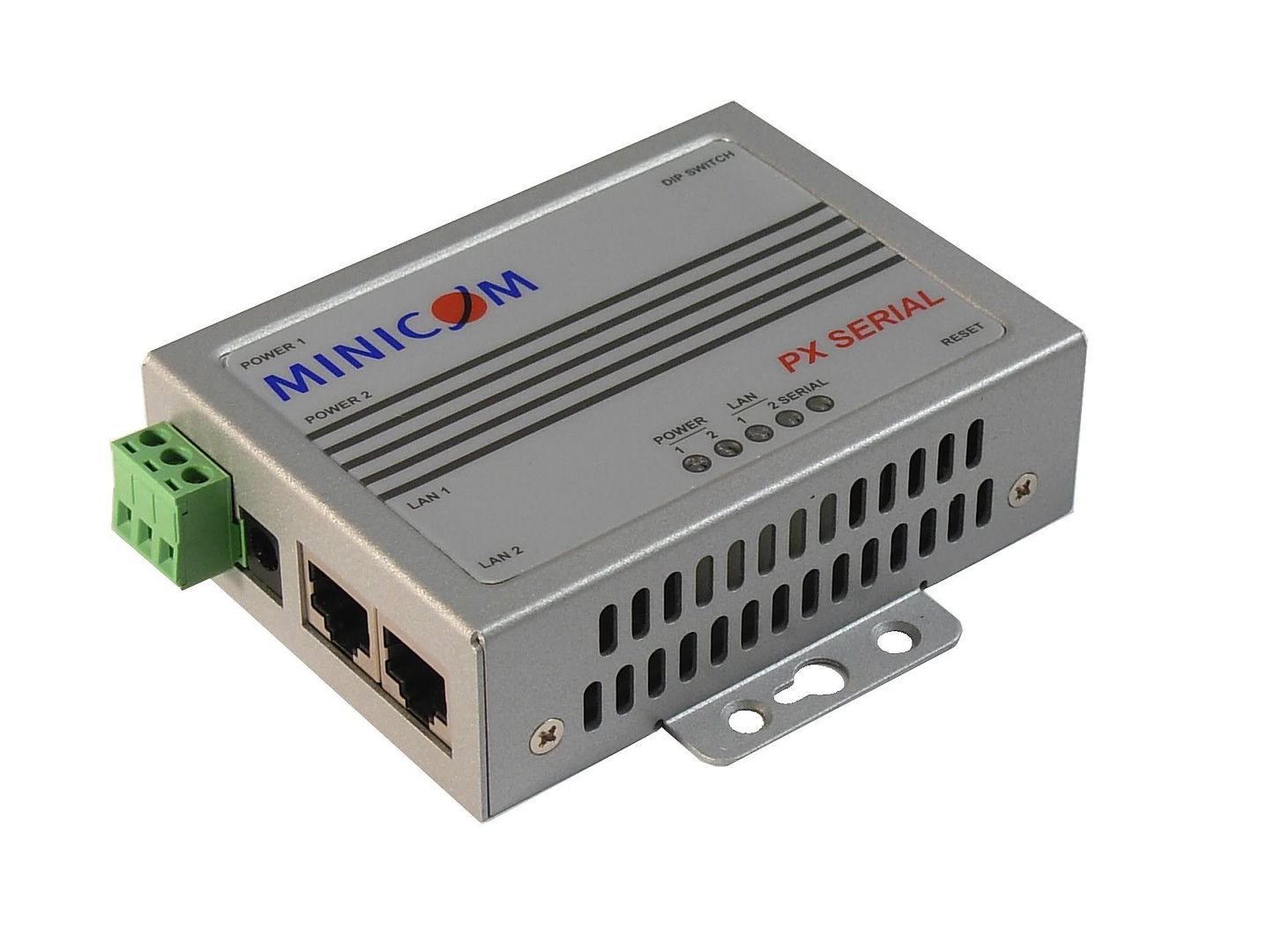
A KVM switch is a must when connecting many servers in the data center. But what of smaller environments that don't need a 16-port switch?
Test Center looked at the Smart 116 IP KVM switch from Minicom Advanced systems in a separate review. For a shop with only one server that need remote BIOS-level control, the price tag can be a little high. Minicom offers the PX " a KVM device similar to the SecureLinx Spider from Lantronix for this scenario. The PX costs $545.
The PX is larger than the Spider. It's slightly bigger than the "palm-sized" that Minicom claims, measuring 3.25 inches by 4 inches by 1.25 inches and weighing slightly less than a pound (15.5 ounces). The metallic box has a RJ45 port on one side and a 26-pin connector port on the other side. The KVM cable (26 inches long) plugs into the connector port and has two wires with VGA and USB connectors on the other end. A regular CAT5 cable connects the PX's RJ45 port to a PoE switch on the network. If the network doesn't have a PoE switch, there's a 4-pin port next to the RJ45 port for the optional power adapter (included). Minicom also supplies several types of plug-ends that can be swapped onto the power cable, depending on the outlet.
Setup is very simple " even more so than for the Smart 116 IP. After connecting the PX to the target server (or desktop, in this test) and network, the PX automatically grabs an IP address from the DHCP server. The PX also comes with a default
IP address in case the network doesn't have a DHCP server, and a static IP can also be assigned using the Web-browser-based configuration tool. Brackets are provided in case the PX needs to be mounted on a rack. The PX can connect to any Linux, Mac, Sun Solaris, Novell (NSDQ:NOVL), or Windows (98 and later) machine. To access the server, the PX requires Internet Explorer 6 or higher running on Windows 2000 or
later. The host computer's resolution should not exceed 1600x1200 at 85 Hertz.
Administrators can install a SSL certificate to secure the PX using the configuration tool. To access the target server, the Web browser uses HTTPS to point to the server IP address. The remote session in the browser is fairly responsive. The Active X-based viewer is easier to use and navigate with than a Java applet would have been. The toolbar also has options to adjust bandwidth, compression, and color options. Keyboard shortcuts and sequences can be programmed to send to the target server.
The convenience of BIOS-level control means administrators can pop a CD on the local machine and copy files directly to the target server. This simplifies management, configuration, and regular maintenance, especially for solution providers offering customers remote support services. The PX provides a way for small businesses to have a way to access the server in case of emergency without making that extra trip.
Be the first to reply!
Post a Comment